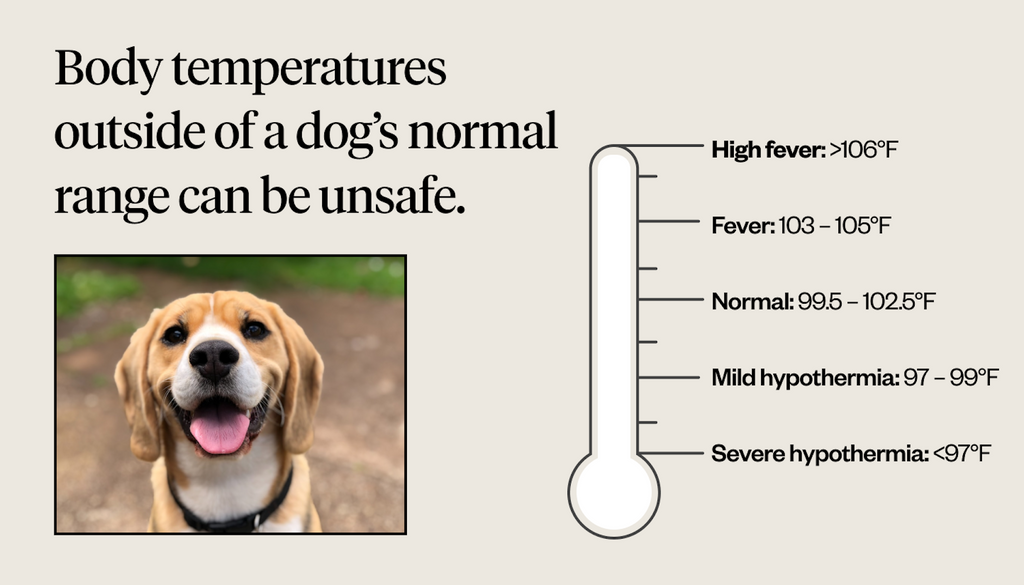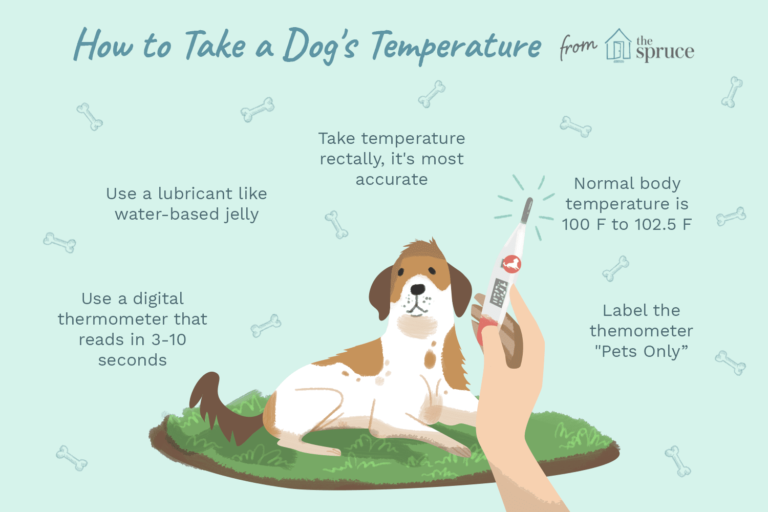The normal body temperature for a dog is between 100.5°F and 102.5°F. Understanding your dog’s normal body temperature is essential for monitoring their health.
A dog’s temperature is an indicator of their overall well-being, and any significant deviation from the normal range could signal an underlying health issue. By regularly checking and being aware of your dog’s temperature, you can promptly address any potential health concerns and ensure your furry companion stays happy and healthy.
We will discuss the importance of knowing your dog’s normal body temperature, how to take their temperature accurately, and what fluctuations in temperature may indicate for your pet’s health. Whether you are a new pet owner or a seasoned caregiver, understanding this vital aspect of your dog’s health is crucial for their overall well-being.

Credit: www.dutch.com
Normal Body Temperature For Dogs
A dog’s normal body temperature is typically between 99. 5°F and 102. 5°F. It’s essential to monitor your furry friend’s temperature regularly, as changes could indicate illness or infection. If your dog’s temperature falls outside this range, it’s best to consult with a veterinarian for further evaluation and care.
What Is Normal Body Temperature?
A dog’s normal body temperature is slightly higher than that of humans. While human body temperature typically ranges between 97.7°F and 99.5°F (36.5°C and 37.5°C), dogs have a normal body temperature of around 100.5°F to 102.5°F (38°C to 39.2°C). However, these values may vary slightly depending on the breed, activity level, and environmental conditions.
How Body Temperature Is Regulated In Dogs
A dog’s body temperature is regulated through various mechanisms to maintain optimal health and function. One of the primary mechanisms is through panting, which helps dogs dissipate excess heat by evaporating moisture from their respiratory tract. Additionally, dogs may seek shade or cool surfaces to lie on when they feel overheated. Their bodies also react by constricting blood vessels or dilating them to regulate heat distribution.
Factors Affecting Body Temperature
Several factors can influence a dog’s body temperature. Environmental factors, such as extreme weather conditions or staying in an enclosed space without proper ventilation, can lead to overheating or hypothermia. The dog’s age, size, and breed can also impact their body temperature regulation. For example, brachycephalic breeds, like Bulldogs or Pugs, may struggle to regulate their temperature due to their short nasal passages.
Measuring A Dog’s Body Temperature
Measuring a dog’s body temperature is crucial to monitor their health. To measure a dog’s temperature accurately, you can use a digital rectal thermometer designed specifically for pets. Lubricate the tip with water-based or pet-friendly lubricant before gently inserting it into the dog’s rectum. Keep in mind that dogs may be uncomfortable or anxious during this process, so it’s essential to approach them calmly and reassure them.
Signs And Symptoms Of Abnormal Body Temperature
| Low Body Temperature (Hypothermia) | High Body Temperature (Hyperthermia) |
|---|---|
| – Shivering and trembling – Weakness or lethargy – Cold ears and paws – Pale or bluish gums | – Excessive panting – Rapid or labored breathing – Increased heart rate – Drooling or excessive thirst – Vomiting or diarrhea – Uncoordinated movements |
If you observe any signs or symptoms of abnormal body temperature in your dog, such as those mentioned above, it’s important to take immediate action. Consult your veterinarian to determine the best course of action based on your dog’s specific condition.

Credit: www.researchgate.net

Credit: www.pinterest.com
Frequently Asked Questions On What Is The Normal Body Temperature For A Dog
What Is Considered A Normal Body Temperature For A Dog?
A normal body temperature for a dog typically ranges between 99. 5°F and 102. 5°F. It’s important to note that puppies may have slightly higher temperatures. Anything above or below these ranges could indicate a health issue, so it’s best to consult with a veterinarian.
Why Is It Important To Know My Dog’s Body Temperature?
Knowing your dog’s body temperature is essential because changes in temperature can indicate underlying health problems. For example, a high temperature could be a sign of infection, while a low temperature could indicate hypothermia. Monitoring your dog’s body temperature can help catch potential issues early and seek appropriate veterinary care.
How Can I Measure My Dog’s Body Temperature?
To measure your dog’s body temperature, use a digital rectal thermometer specifically designed for pets. Apply a lubricant or petroleum jelly to the thermometer, gently lift your dog’s tail, and insert the thermometer about 1 inch into the rectum. Be sure to hold it securely for about 1 minute to get an accurate reading.
What Factors Can Affect A Dog’s Body Temperature?
Several factors can affect a dog’s body temperature. These include environmental factors such as weather conditions, activity level, age, and breed. Additionally, certain medical conditions, such as infections or underlying diseases, can cause changes in body temperature. It’s important to be aware of these factors when determining what is normal for your dog.
Conclusion
Understanding the normal body temperature of your dog is crucial for their overall health and well-being. By knowing what is considered normal, you can quickly identify any potential health issues and take appropriate actions. Remember to monitor your dog’s temperature regularly and consult a veterinarian if you suspect any abnormalities.
A healthy dog is a happy dog!



